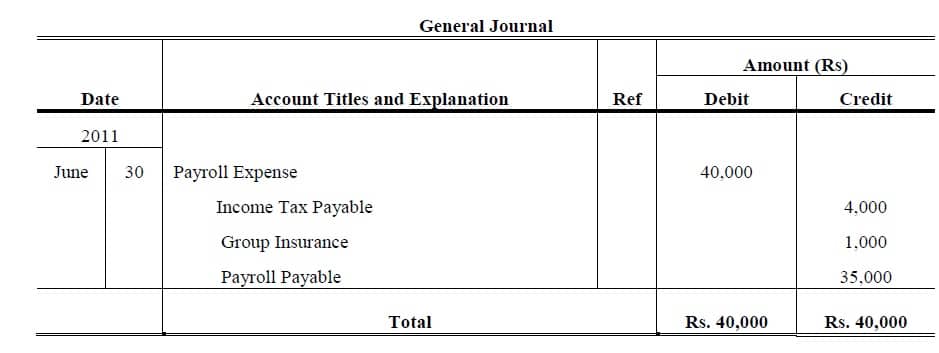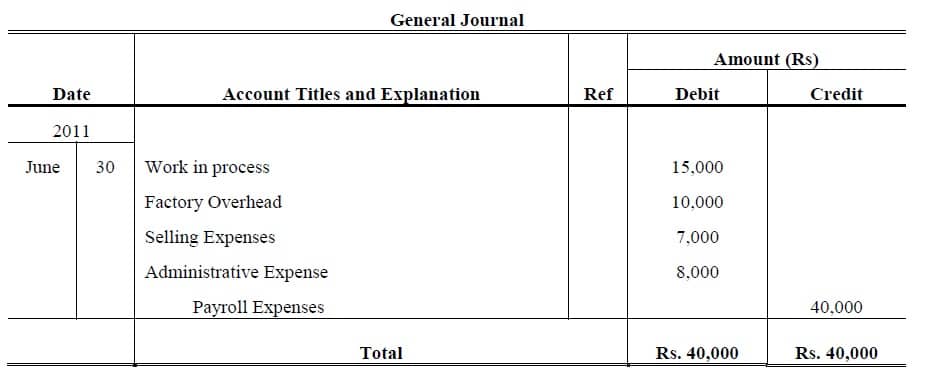Labor Cost
Previous Lesson: Economic Order Quantity
Next Lesson: Payroll Systems
Labor accounting assumes importance, as it is the second major item of cost of production. Like material, cost of labor also should be controlled for reducing cost of production and improving the effectiveness. The total amount of wages and salaries paid by a company to its employees is called Payroll.
Payroll
A list of a company’s employees and the amount of money they are to be paid is called payroll. Payroll expense consists of:
- Labor cost (Direct and indirect)
- Administrative staff expenses (Fixed and variable)
- Selling and distribution staff expenses (Fixed and variable)
- Labor related cost (Commission, Overtime pay, bonus pay, shift allowances, and other benefits)
Employee Pay
Financial compensation paid to an employee by an employer for work done. Amount of money paid to an employee by an employer in return for work performed. Pay has two parts:
Gross Pay
Net Pay
Gross Pay or Employer’s Payment
The amount of pay to which an employee is entitled may be earned in a variety of different ways. These include:
1. Basic pay, such as:
- Wages paid according to the number of hours worked
- Wages paid according to the output of the employee
- Salaries, for salaried staff
2. Allowances, such as:
- House rent
- Compensatory allowance
- Medical allowance etc.
3. Bonuses and commission, such as:
- Bonuses paid under bonus schemes, based on productivity, or profitability
- Commission paid, normally based on sales
4. Other pay, such as:
- Overtime pay, for extra hours worked by the employee
- Shift pay, to compensate for unsocial hours
Net Pay or Take Home Pay
Net pay is equal to Gross pay minus Total Deductions. Deductions are two type i.e.
Statutory Deductions
Non-Statutory Deductions
Statutory deductions are deductions from pay that are made by state or law. In our country income tax is taken away from gross pay and paid to Income Tax Department. Non-statutory deductions are voluntary deductions from pay that the employee chooses to make Examples of these are:
- Contributions by the employee to a pension scheme
- Any advance taken by employee
- Insurance etc.
Example 1:
The following figures have been extracted from a trader’s records in respect of salaries for July.
Basic Pay Rs. 16,300
Income tax 1,600
Employees’ pension contributions 700
Employer’s pension contributions 700
House Rent 3,500
Medical Allowance 2,200
Insurance 400
Car Advance Deduction 1,800
Compensatory Allowance 800
Other Allowances 3,000
Requirement (A): What is the total amount the trader will have to pay?
Solution:
Gross Pay = Basic Pay + House Rent + Medical Allowance + Compensatory Allowance + Other Allowances
Gross Pay = 16,300 + 3,500 + 2,200 + 800 + 3000
Gross Pay = Rs. 25,800
Requirement (B): What is the net pay received by employee?
Net Pay = Gross Pay – Income tax – Employees’ pension contributions
Net Pay = 25,800 – 1,600 – 700
Net Pay = Rs. 23,500
>> Practice Multi-choice Question with Answers: Labor Costing MCQs
Video Lecture: Costing Concepts in Urdu & Hindi-Workbook Practice
Click Here To Download Workbook Used in Video
Click Here To Download Workbook Used in Video
Payroll Entries
There are three entries have been passed in this regard:
- Payroll Preparation
- Payroll Distribution
- Payroll Payment
Example 2:
Prepare journal entries to record payroll preparation, distribution and payment as on June 30th, 2011:
Direct Labor Rs. 15,000
Indirect Labor 10,000
Sales Salaries 7,000
Administrative Salaries 8,000
Total Rs. 40,000
Deductions:
Income tax Rs. 4,000
Group insurance 1,000
Solution:
Solution (a) Payroll Preparation
Solution (b) Payroll Distribution
Solution (c) Payroll Payment
>> Practice Labor Costing Quiz 1.
Related Topics
Inventory Management MCQs
Economic Order Quantity MCQ
More Interest
Labor Cost Problems
References
Ramchandran, N., & Kakani, R. K. (2007). Financial Accounting for Management. (2nd, Ed.) New Delhi: Tata McGraw Hill.
Sehgal, A., & Sehgal, D. (n.d.). Advanced Accountancy (Vol. I & II). New Delhi: Taxmann Publication Pvt. Ltd.
Shukla, M. C., Grewal, T. S., & Gupta, S. C. (2008). Advanced Accountancy (Vol. I & II). New Delhi: S Chand & Co.
Weygandt, J. J., Kimmel, P. D., & Kieso, D. E. (2012). Accounting Principles (10th ed.). Hoboken: John Wiley & Sons, Inc.
Williams, M., & Bettner, H. (1999). Accounting (The basic for business decisions). (11th, Ed.) USA: Irwin McGraw- Hill.




You should take part in a contest for among the best blogs on the web. I’ll suggest this site!
This is a great blog.